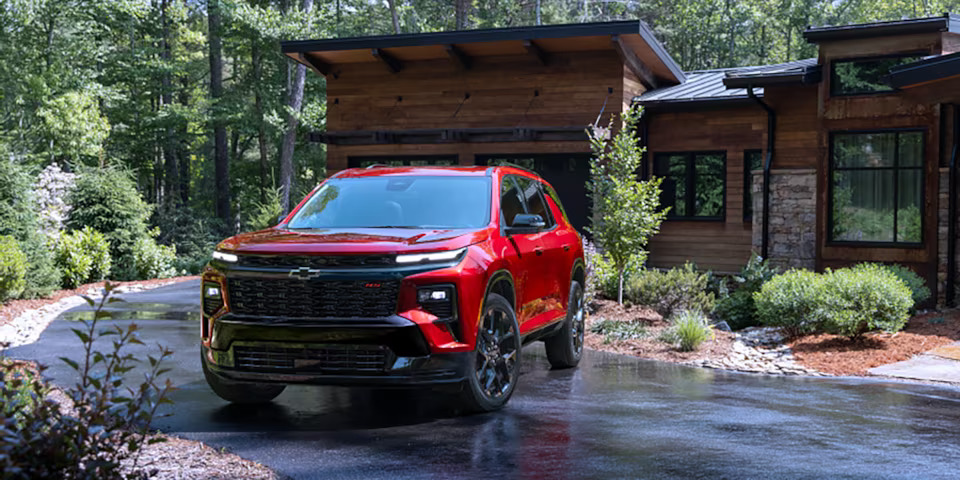In today’s automotive landscape, SUVs have become the quintessential family vehicle, blending versatility, style, and the capacity to accommodate multiple passengers with ease.
Among the various factors that buyers consider when choosing an SUV, third-row seating comfort has emerged as a pivotal aspect, especially for families, carpools, and anyone who regularly transports more than five people.
Unlike traditional sedans or smaller crossovers, SUVs with a functional third row open up the possibility of carrying seven or eight occupants, turning a vehicle into a genuine people-mover.
However, not all third rows are created equal. What may look spacious on paper often doesn’t translate into genuine comfort, particularly on longer journeys where cramped legroom or lack of amenities can turn a pleasant trip into an ordeal.
The appeal of SUVs with good third-row comfort lies in their ability to combine space with passenger well-being. It’s not just about having enough seats but also ensuring those seats are usable, accessible, and comfortable for all ages and sizes. A great third row offers ample legroom and headroom, ergonomic seating with supportive cushioning, and ease of entry and exit.
Beyond physical dimensions, comfort also involves features such as climate control vents, USB charging ports, cup holders, and an environment that minimizes noise and vibration. These elements collectively make a difference, especially when the vehicle is fully loaded and the back seats are occupied by adults rather than just children.
At the same time, the reality is that many SUVs fall short in this area. In some cases, the third row exists merely to boost seating capacity on paper without delivering a genuine, comfortable experience.
Limited space, difficult access, lack of ventilation or charging options, and poor ride quality can turn the third row into an afterthought. Families or groups that need to regularly use all available seats quickly learn to avoid these models, prioritizing vehicles that make no compromises in passenger comfort.
In this article, we explore two sides of the third-row comfort equation. First, we highlight five SUVs that excel in this regard — models that provide roomy, well-appointed, and truly comfortable third-row seating, making them stand out in the competitive midsize and full-size SUV segments.
These vehicles demonstrate that with smart design and thoughtful engineering, it’s possible to deliver a spacious, convenient, and pleasant third-row experience for passengers of all ages. They combine generous interior dimensions, intuitive access, quality materials, and a suite of comfort features that keep third-row riders happy even on long trips.
Conversely, we’ll also examine five SUVs that you might want to skip if third-row comfort is a priority. These models, while often strong contenders in other areas such as towing capacity, fuel efficiency, or price, typically fall short in the comfort department for back-row passengers.
Whether due to cramped dimensions, difficult ingress and egress, lack of creature comforts, or poor ride quality, these SUVs don’t offer a pleasant third-row experience, especially for adults or taller passengers. Understanding their shortcomings helps buyers make informed decisions and avoid disappointment down the road.
With the booming popularity of SUVs and increasing demand for family-friendly vehicles, third-row comfort has become a key differentiator. Whether you’re a parent shuttling kids and friends, someone who carpools frequently, or simply a driver who values space and flexibility, knowing which SUVs deliver on third-row comfort is invaluable.
This article aims to provide a detailed guide to help you navigate these options, balancing features, comfort, and practical usability. By the end, you’ll have a clearer picture of which models are worth considering and which ones to approach with caution, ensuring every seat in your SUV truly feels like a first-class ride.
Also Read: 5 Trucks with Best Ventilated Seats and 5 with No Cooling
5 SUVs with Best Third-Row Comfort
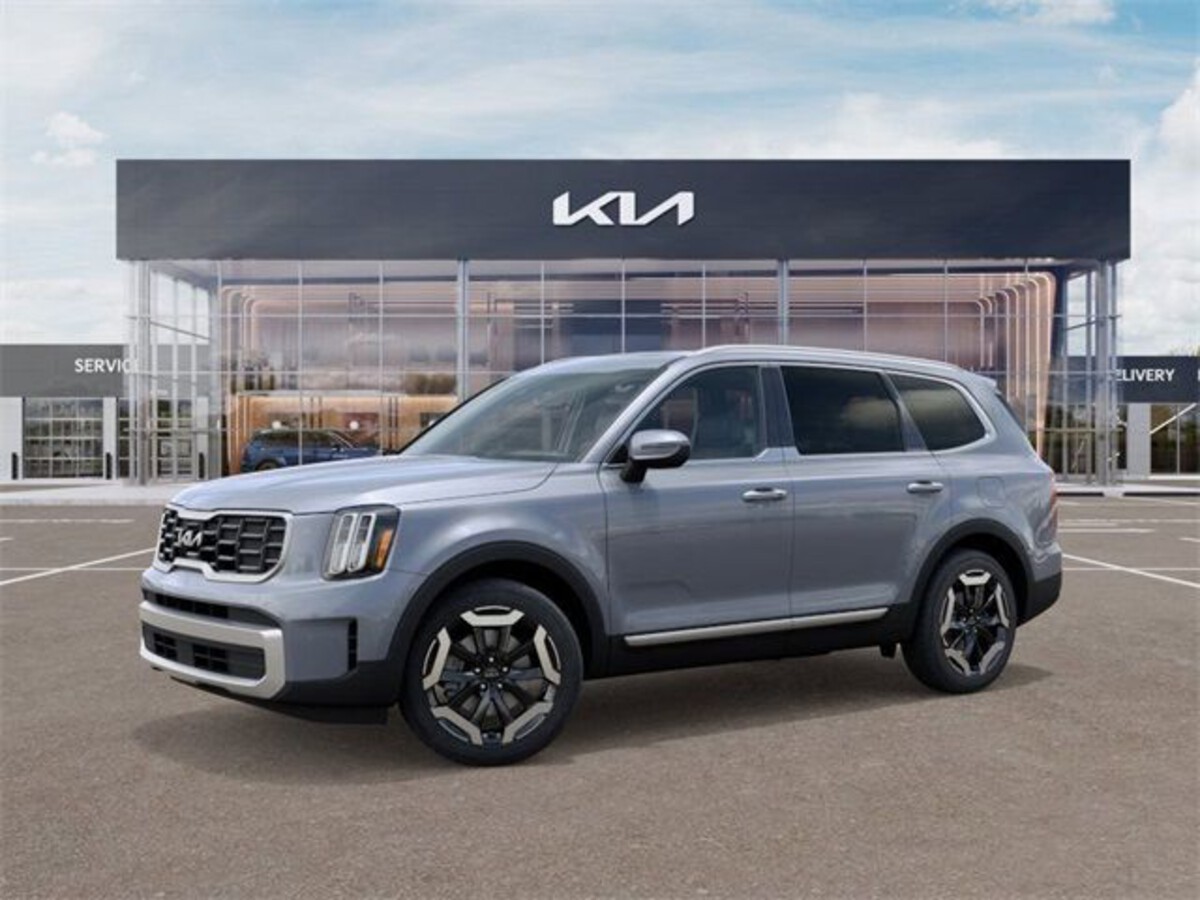
1. Kia Telluride
The Kia Telluride has quickly established itself as a standout in the crowded midsize SUV market, largely due to its impressive balance of style, functionality, and comfort, particularly when it comes to the third-row seating. Unlike many SUVs that cram extra seats into the back as a mere formality, the Telluride’s third row is genuinely spacious and thoughtfully designed.
Passengers in the back enjoy ample legroom and headroom that easily accommodate adults, a rarity in this segment. This generous space prevents the usual feelings of confinement, allowing occupants to relax during longer journeys without discomfort. The seats themselves offer firm yet plush cushioning that supports proper posture, helping to reduce fatigue even on extended trips.
Another highlight of Telluride’s third-row comfort is accessibility. The second-row seats slide and recline smoothly, creating a wide, easy entry point that’s especially convenient for families with kids or older passengers. Unlike competitors, where accessing the third row feels like a squeeze, the Telluride ensures everyone can climb in and out with minimal hassle.
This ease of access contributes to a more inclusive experience, making the back seats feel like a legitimate part of the cabin rather than an afterthought. Additionally, the vehicle’s higher floor and seating position mean third-row passengers have a better view out the windows, helping to reduce any sense of claustrophobia.
Comfort extends beyond seating dimensions and access. The Telluride’s cabin is fitted with thoughtful features like rear climate control vents, USB charging ports, and ample cup holders, ensuring that passengers in the third row have all the creature comforts needed for a pleasant ride.
The interior materials in the rear are surprisingly upscale, featuring soft-touch surfaces and available leather trim that elevate the overall experience. Noise insulation is also excellent, with the suspension tuned to absorb bumps and reduce road noise, so backseat passengers aren’t subjected to harsh vibrations or excessive engine sounds.
Finally, the Telluride scores high marks for safety and convenience technologies that benefit third-row occupants. The SUV includes advanced driver assistance features like blind-spot monitoring and rear cross-traffic alert, which provide peace of mind even when the vehicle is fully loaded.
In-car entertainment options, including available rear-seat entertainment screens, make longer drives more enjoyable, especially for kids or passengers who need a distraction. Overall, the Kia Telluride’s third row combines space, comfort, accessibility, and thoughtful amenities, making it a top choice for anyone who regularly transports more than five people.
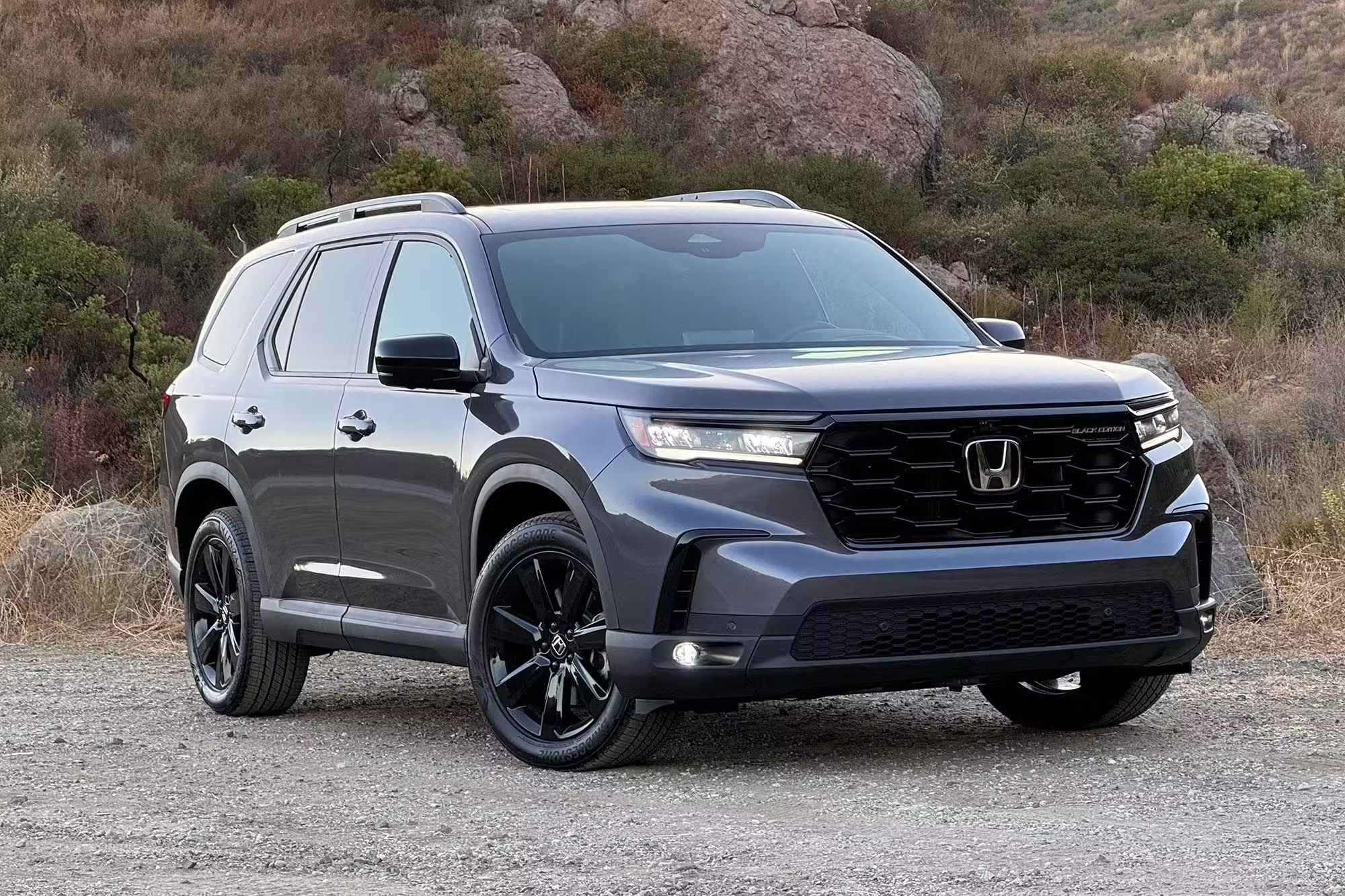
2. Honda Pilot
The Honda Pilot has been a staple in the family SUV segment for years, largely because of its spacious and comfortable interior, particularly the third row. It’s one of the few midsize SUVs that can comfortably accommodate adults in the back without forcing them to curl up or endure discomfort.
The Pilot’s boxy and upright design maximizes interior volume, which translates directly into generous legroom and headroom in the rear seats. Even passengers over six feet tall report feeling comfortable in the third row, a significant advantage over many rivals that limit third-row seating mostly to children. The seats themselves are well-padded and contoured, providing support without being overly firm or soft.
What truly sets the Pilot apart is its ease of access. The second-row seats slide and tilt forward with minimal effort, creating a wide passageway that even larger adults can navigate comfortably. This is particularly valuable for parents who often need to help children into the back or for passengers who may have mobility challenges.
The relatively low step-in height further simplifies entry and exit, ensuring that the third row can be used frequently without causing frustration. Additionally, the Pilot offers configurable second-row seating arrangements, such as captain’s chairs or a bench, allowing buyers to tailor the interior layout based on their family’s needs.
Climate control and convenience features also contribute significantly to the Pilot’s third-row appeal. Rear passengers benefit from dedicated air vents and the option of independent temperature controls, ensuring that they remain comfortable regardless of weather conditions.
The inclusion of USB charging ports and plenty of cup holders means that occupants can stay connected and hydrated throughout their journey. Moreover, large windows provide excellent visibility and natural light, which helps prevent feelings of confinement common in the rear rows.
Finally, the Pilot shines in ride quality and noise insulation, two factors that greatly influence passenger comfort. The suspension is tuned to smooth out bumps and rough pavement, creating a stable and cushioned ride. Road and wind noise are well-controlled, allowing for easy conversation and a quieter cabin atmosphere.
Safety is another strong point, with multiple airbags and advanced safety systems like collision mitigation braking and lane-keeping assist ensuring that all passengers, including those in the third row, travel with confidence. Taken together, these qualities make the Honda Pilot a top contender for families or anyone needing a reliable and comfortable third-row SUV.

3. Subaru Ascent
The Subaru Ascent enters the midsize SUV segment with a clear focus on family practicality, safety, and all-weather capability, thanks to its standard all-wheel drive. But beyond these headline features, the Ascent also impresses with its spacious and comfortable third-row seating — an area where many SUVs in its class fall short.
Unlike cramped or barely usable rear rows found in some rivals, the Ascent’s third row comfortably seats two adults with enough legroom and headroom for long drives. The seats are ergonomically designed with a focus on support and cushioning, making it easier to endure longer trips without discomfort or fatigue.
Access to the third row is well thought out in the Ascent. The second-row seats fold and slide forward with relative ease, and the doors open wide to create a roomy entrance. This is particularly helpful for families with children or older adults who might struggle with tighter, more confined entries in other SUVs.
Furthermore, Subaru thoughtfully designs the cabin height and step-in position to allow smoother transitions into the back row, reducing strain on passengers. Large windows and good headroom improve the overall ambiance, allowing rear-seat occupants to avoid feeling boxed in.
Comfort features extend beyond the seats themselves. Rear climate controls are available, ensuring that passengers in the third row can adjust temperature settings to their liking.
USB charging ports, cup holders, and storage bins are strategically placed for convenience, ensuring that passengers can easily keep devices powered and personal items within reach. The Ascent also offers rear-seat sunshades, which help mitigate glare and keep the cabin cooler on sunny days, further improving comfort levels for backseat passengers.
Lastly, the ride quality and noise insulation in the Subaru Ascent complement its spacious interior to create a calm and comfortable environment for all occupants. The suspension absorbs road imperfections well, preventing jolts and vibrations from reaching the rear seats.
The cabin is also insulated to minimize wind and tire noise, helping maintain conversation-friendly acoustics even at highway speeds. When combined with Subaru’s comprehensive suite of safety features, including EyeSight driver assist technology, the Ascent offers a compelling option for those prioritizing third-row comfort in a family SUV.
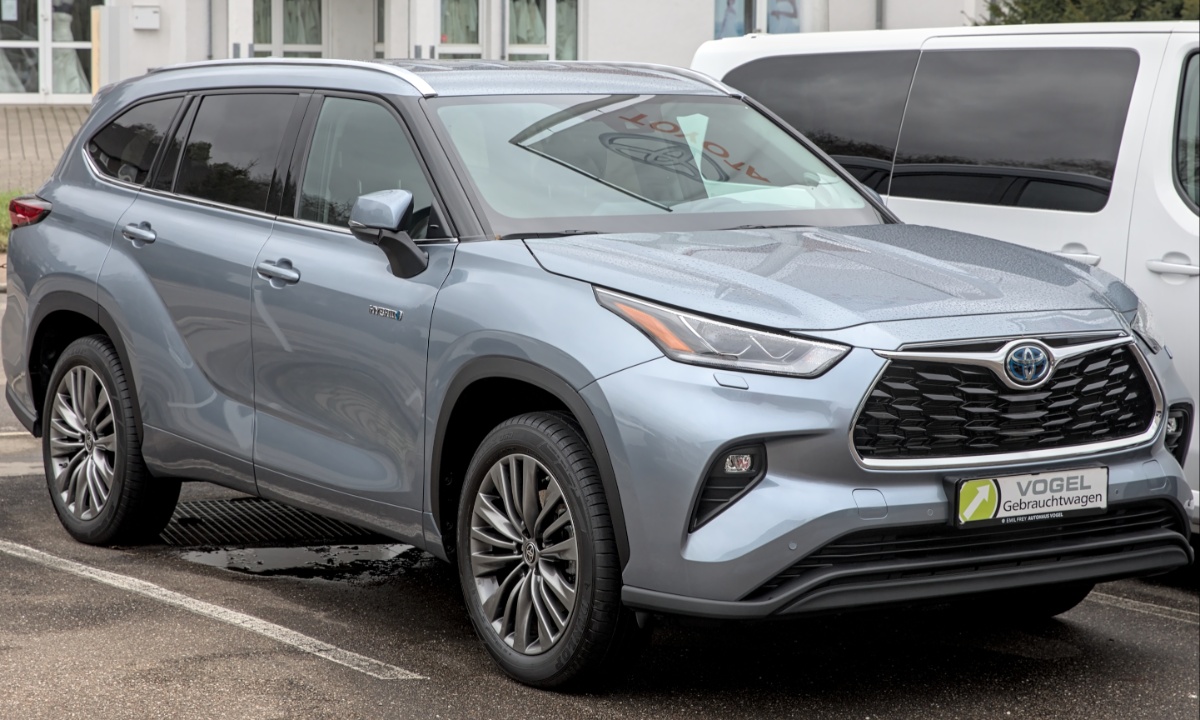
4. Toyota Highlander
The Toyota Highlander is a perennial favorite in the midsize SUV category, known for its reliability, efficiency, and overall well-roundedness. One area where the Highlander continues to impress is its third-row seating, which offers an uncommon combination of space, comfort, and convenience for the segment.
While some competitors force passengers in the third row to squeeze into tight quarters, the Highlander manages to provide enough legroom and headroom for most adults to ride without feeling cramped, especially on shorter to medium-length trips. The seats themselves are designed with ergonomic contours and firm padding, offering solid support that helps reduce fatigue.
Accessibility is a crucial factor for third-row usability, and the Highlander doesn’t disappoint. The second-row seats slide forward and tilt with minimal effort, creating a wide and manageable entry for passengers to climb in and out. This ease of access is especially valuable for families with children or elderly passengers.
Additionally, the Highlander’s step-in height is reasonable, avoiding the awkward climbing motions seen in some SUVs with taller floors. Large windows surrounding the third row create an open and airy feel, helping passengers avoid claustrophobia and providing good visibility.
The Highlander also pays attention to rear passenger comfort through features such as rear climate control vents, which ensure a steady flow of conditioned air to the third row. Multiple USB charging ports keep devices powered, while cup holders and small storage areas add to passenger convenience.
The interior materials used in the back are of high quality, contributing to a pleasant environment that feels cohesive with the rest of the cabin. Toyota’s focus on a quiet cabin environment means that noise from the road and outside elements is kept at bay, creating a more peaceful experience for all passengers.
Ride quality and safety are also significant contributors to the Highlander’s third-row comfort. The suspension effectively smooths out rough roads, preventing jarring movements that can cause discomfort. Noise insulation is carefully engineered, helping to create a serene cabin environment.
Safety features such as multiple airbags, lane departure alerts, and automatic emergency braking provide peace of mind for families traveling with multiple passengers. Collectively, these factors make the Toyota Highlander an excellent option for those who need a comfortable, practical third row in a midsize SUV.

5. Ford Explorer
The Ford Explorer has been an iconic nameplate in the SUV world for decades, and it continues to evolve with a focus on passenger comfort, technology, and versatility. When it comes to third-row seating, the Explorer offers one of the most spacious and comfortable options in its class.
Adults sitting in the third row will find generous legroom and headroom, along with seats that are supportive and slightly reclining, which greatly enhances comfort on longer trips. The height of the seats and their positioning within the cabin mean passengers don’t feel like they are sitting on the floor, a common complaint with some third-row seats in rival SUVs.
Access to the rear seats is facilitated by second-row seats that fold and slide forward easily, creating a wide entry point that is accommodating to both children and adults. This ease of access is an important feature for families or groups who frequently use the full seating capacity of the vehicle.
The Explorer’s higher ride height also helps, reducing the effort required to get into the back and making it more comfortable for passengers of all ages.
Passenger comfort is further enhanced by well-thought-out amenities such as rear climate control vents, multiple USB ports for device charging, and cup holders strategically placed within reach of the third-row occupants.
The interior materials in recent Explorer models have been upgraded to feel more premium, with soft-touch surfaces and quality upholstery that contribute to a comfortable and inviting atmosphere throughout the cabin. Noise insulation is effective, and the suspension smooths out most road imperfections, minimizing jolts and vibrations for rear passengers.
Finally, the Explorer packs a host of safety and convenience features that protect and entertain third-row passengers. Advanced safety technologies such as blind-spot monitoring, rear cross-traffic alerts, and adaptive cruise control are available to enhance peace of mind.
Optional rear-seat entertainment systems provide a way to keep passengers occupied on longer drives, making the Explorer not only spacious but also an enjoyable place to spend time. Overall, the Ford Explorer’s third row strikes an excellent balance of space, comfort, accessibility, and amenities, making it one of the best choices in its segment.
5 SUVs You’d Skip for Third-Row Comfort
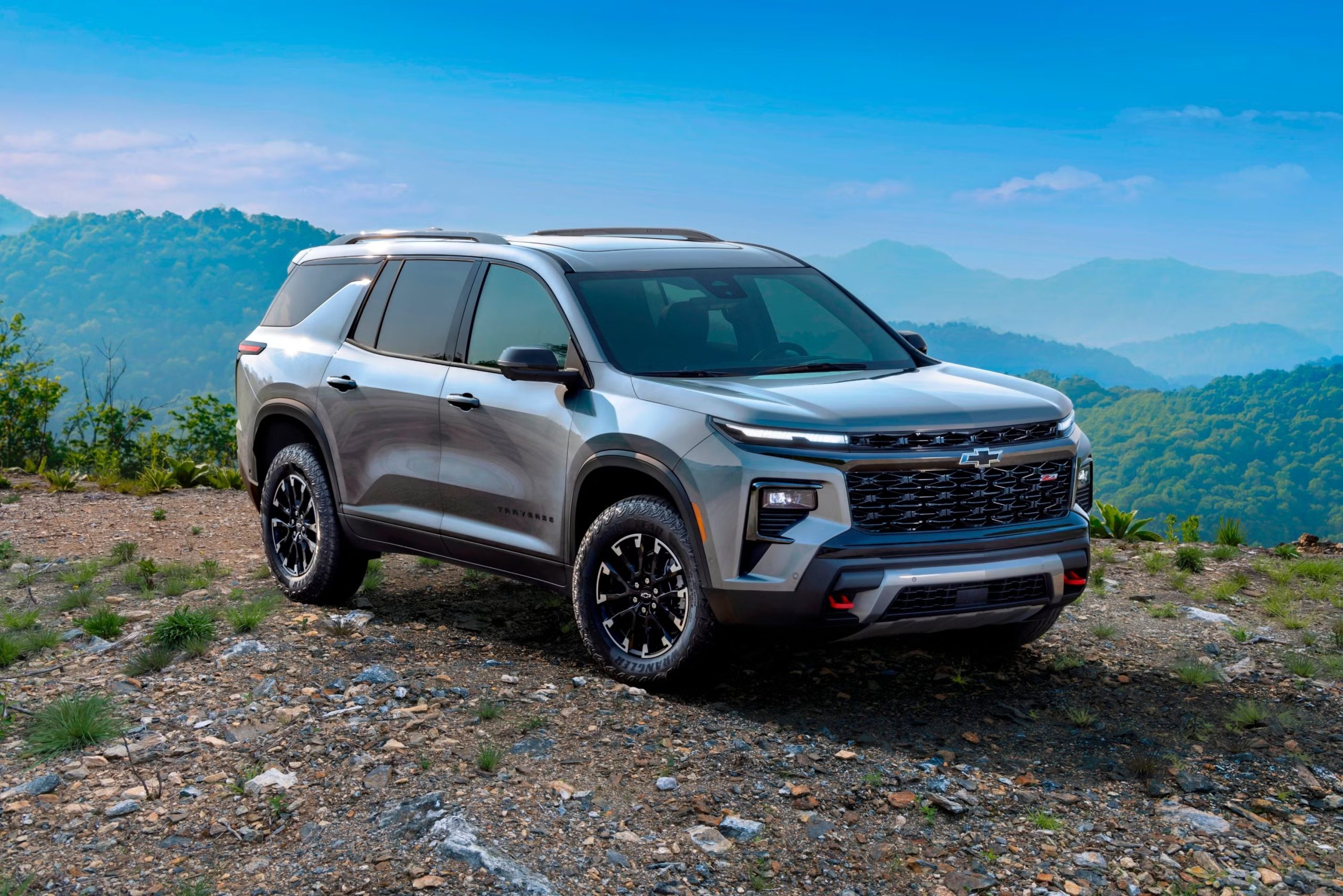
1. Chevrolet Traverse
The Chevrolet Traverse is often praised for its spacious interior and impressive cargo capacity, but when it comes to third-row comfort, it falls short compared to some of its competitors. While the Traverse technically offers a full third row that can seat three passengers, the reality is that space is cramped, especially for adults.
The legroom in the third row is noticeably limited, often forcing taller passengers to bend their knees awkwardly or sit with cramped legs, which can lead to discomfort on anything more than short trips. Headroom is another concern; the sloping roofline reduces vertical space, causing taller passengers to feel boxed in and somewhat claustrophobic.
Getting in and out of the third row in the Traverse can be a frustrating experience. The second-row seats do slide and fold, but the opening created is not as generous or as easy to navigate as some competitors. This tight access can be especially challenging for older passengers or those with limited mobility.
The relatively high step-in height adds another layer of difficulty, as passengers must climb up into the rear seats rather than stepping in with ease. This factor alone can deter families who intend to use the third row frequently or for long journeys.
In terms of amenities, the Traverse’s third row is fairly basic. While it offers cup holders and some storage space, the lack of dedicated climate controls and limited USB ports for rear passengers reduces overall comfort and convenience.
This is particularly noticeable on longer trips, where the inability to adjust airflow or charge devices can make the back row feel neglected. The materials in the third row also tend to be less refined compared to the front seats, which impacts the perception of comfort and quality.
Noise and ride quality further detract from the Traverse’s third-row experience. Road and wind noise infiltrate the cabin more than in some competitors, and the suspension tends to feel stiffer when the vehicle is fully loaded.
This means that third-row passengers not only deal with cramped quarters but also a bumpier, noisier ride, which can exacerbate fatigue and discomfort. While the Traverse remains a solid midsize SUV overall, its third-row shortcomings make it less ideal for those who prioritize comfort for all passengers.
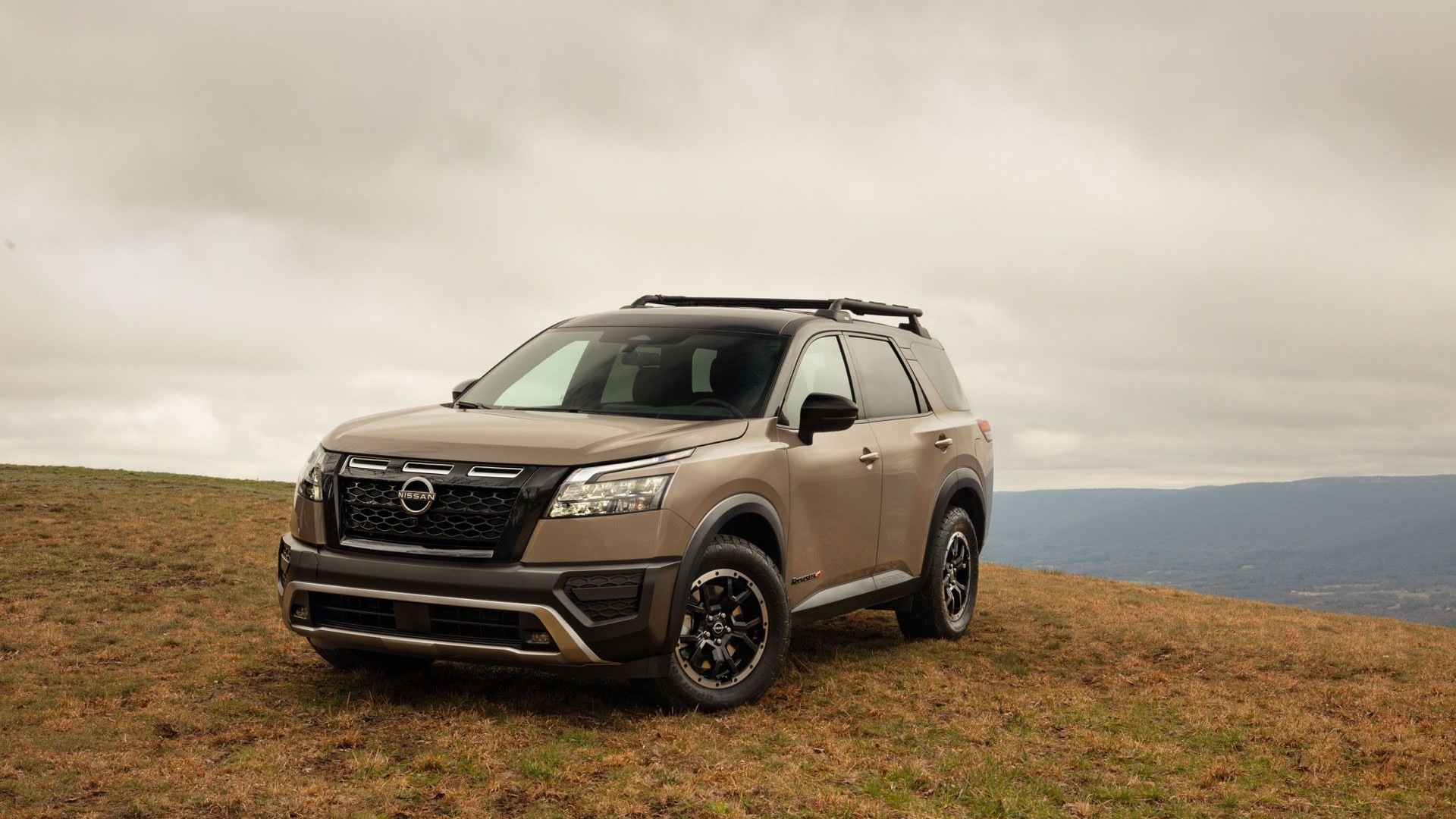
2. Nissan Pathfinder
The Nissan Pathfinder has long been a reliable SUV with rugged appeal, but when it comes to third-row seating comfort, it lags behind many modern competitors. The third row in the Pathfinder is generally considered tight, with restricted legroom and limited headroom that make it better suited for children than adults.
Passengers over five and a half feet tall often find themselves hunched or cramped, which quickly becomes uncomfortable on anything more than brief trips. The bench-style seating in the back also lacks significant contouring or support, making it difficult for passengers to maintain a comfortable posture over time.
Access to the Pathfinder’s third row is another notable drawback. While the second-row seats fold and slide, the entryway remains somewhat narrow and awkward, making it tricky for older passengers or larger adults to maneuver their way in and out.
The step-in height is also relatively high, requiring a bit of climbing, which can be inconvenient, especially when frequently loading and unloading passengers. This combination of tight access and cramped seating makes the third row feel more like an occasional-use feature rather than a truly comfortable, everyday seating option.
Amenities in the Nissan Pathfinder’s third row are sparse. There are minimal charging options, no dedicated climate controls, and the overall seating materials feel basic compared to the rest of the cabin.
This lack of creature comforts means passengers in the back often feel disconnected from the rest of the cabin experience. Additionally, the rear windows are smaller than average, which can make the space feel even more confined and darker, contributing to a less inviting atmosphere.
Finally, ride quality and noise levels compound the third-row discomfort in the Pathfinder. The suspension, while capable off-road, does not absorb road imperfections smoothly when the vehicle is fully loaded, resulting in a somewhat harsh ride for rear passengers.
Road noise also tends to be noticeable, diminishing the overall sense of tranquility inside the cabin. Although the Pathfinder offers strong towing capabilities and ruggedness, its third row is better suited for kids or short trips rather than comfortable adult seating.
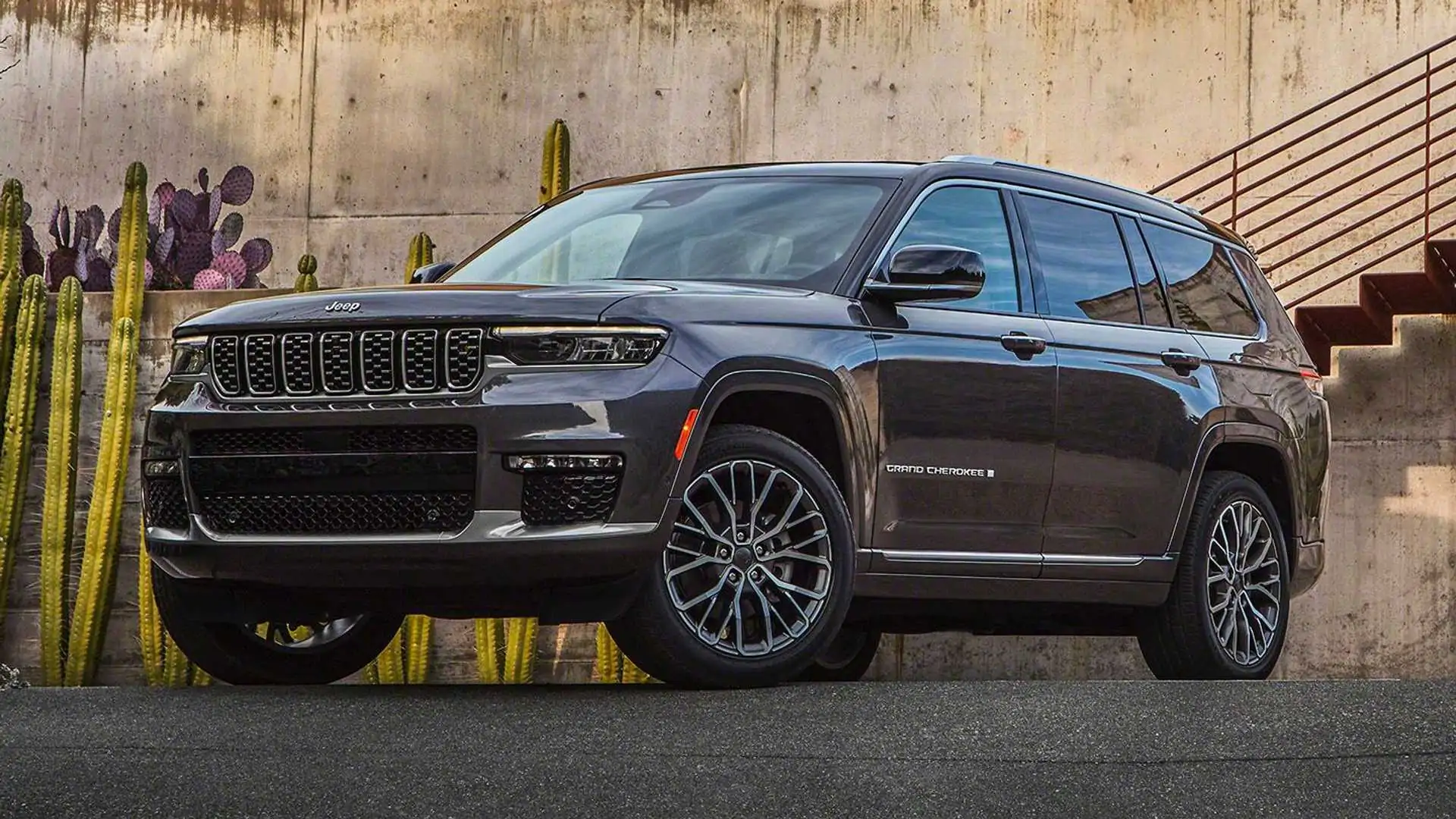
3. Jeep Grand Cherokee L
The Jeep Grand Cherokee L offers a rare seven-seat configuration in a brand traditionally known for its two-row SUVs, but its third-row seating experience is a mixed bag. While it technically fits two passengers in the back, the third row is noticeably tight and can be uncomfortable for adults, especially on longer trips.
Legroom is limited due to the overall vehicle length and design compromises made to fit the extra row, and headroom is also somewhat constrained. This makes the third row more appropriate for children or smaller adults. The seats themselves, while styled to match the rest of the upscale interior, tend to be less supportive and offer limited adjustability.
Entry and exit to the third row in the Grand Cherokee L is not the easiest process. The second-row seats fold and slide forward, but the opening created can feel cramped, especially when compared to other SUVs with more expansive entryways.
Additionally, the relatively high floor and ride height mean that climbing into the back seats requires more effort, which might not be ideal for frequent use by older passengers or those with limited mobility. The limited visibility and smaller windows in the rear also add to a sense of confinement.
The Jeep’s third row is also somewhat lacking in passenger conveniences. While the rest of the cabin features upscale materials and numerous tech features, the back seats have fewer amenities, such as dedicated climate controls or plentiful USB ports.
This disparity can make third-row passengers feel like an afterthought in a vehicle that otherwise aims to provide luxury and comfort. Moreover, the third-row bench does not recline or offer sliding adjustments, limiting customization of passenger comfort.
Finally, the ride quality in the Grand Cherokee L, while generally smooth and composed, can feel a bit firm in the back. The suspension tuning prioritizes off-road capability and sporty handling over cushioned comfort, which can result in a jarring ride for those seated furthest from the wheels.
Noise insulation is decent but not exceptional, and road noise can be more pronounced at higher speeds. For those seeking an SUV with a truly comfortable third row, the Grand Cherokee L might leave them wanting.
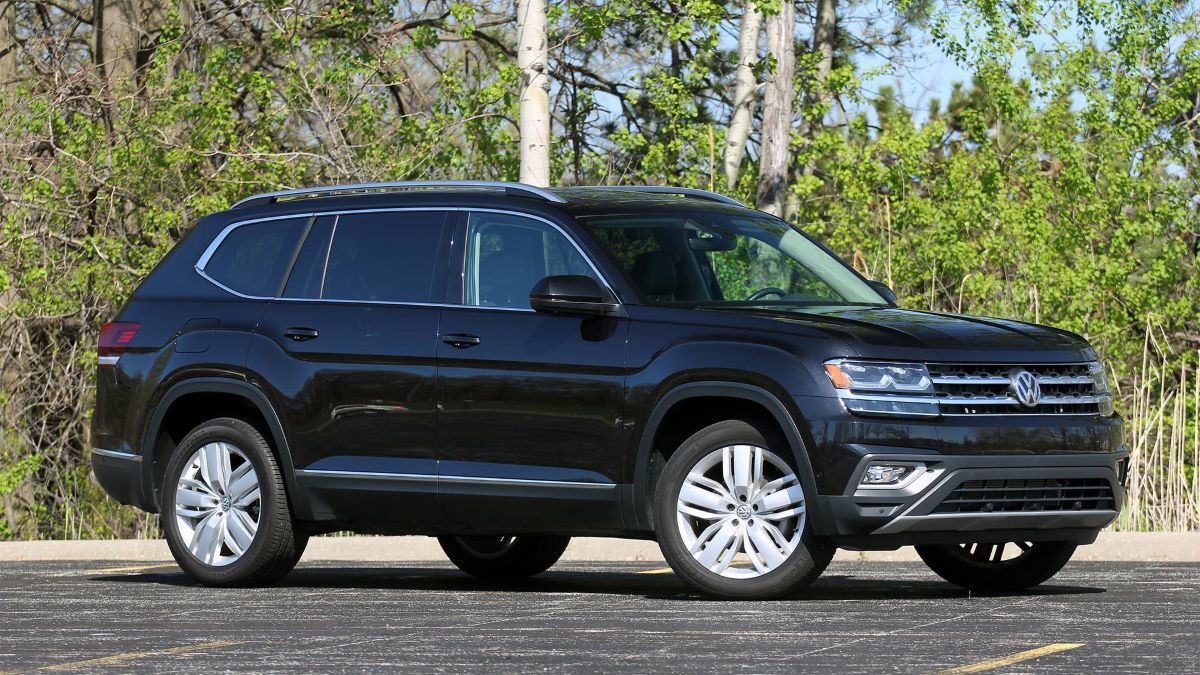
4. Volkswagen Atlas
The Volkswagen Atlas is widely recognized for its spacious interior and family-friendly features, but its third row leaves something to be desired when it comes to comfort. While the Atlas boasts one of the largest third rows in the segment by raw measurements, the seating itself is somewhat flat and lacks contouring, which reduces support during longer journeys.
The seats are also relatively firm, which some passengers may find less comfortable over extended periods. The headroom is generally sufficient, but the flat floor design can restrict legroom, especially for taller adults.
The access to the third row in the Atlas is decent, with second-row seats that fold and slide forward easily, creating a reasonable entry space. However, the relatively upright seating position and somewhat stiff seat cushions mean that climbing in and out can feel less comfortable than in some rivals.
The step-in height is moderate but not low enough to make entry effortless, especially for smaller children or older passengers. Additionally, the wide rear doors help, but do not completely mitigate the challenge of maneuvering into the back row.
Amenities for third-row passengers in the Volkswagen Atlas are functional but minimal. While the seats come with cup holders and some storage pockets, there is a lack of dedicated climate controls and USB charging options in the back.
This can make long trips less comfortable, especially when passengers want to adjust their own airflow or keep devices charged. The interior materials in the third row, while not cheap, do not quite match the higher-end finishes found in front seats, which may affect perceived comfort.
Ride quality and noise levels further impact the third-row experience in the Atlas. The suspension is tuned more for stability and handling than soft comfort, which means that bumps and rough pavement can be felt more acutely in the rear.
Road and wind noise also creep into the cabin at highway speeds, which can detract from a peaceful atmosphere. While the Atlas offers excellent space on paper, its third row may not deliver the comfort expected for frequent adult use.
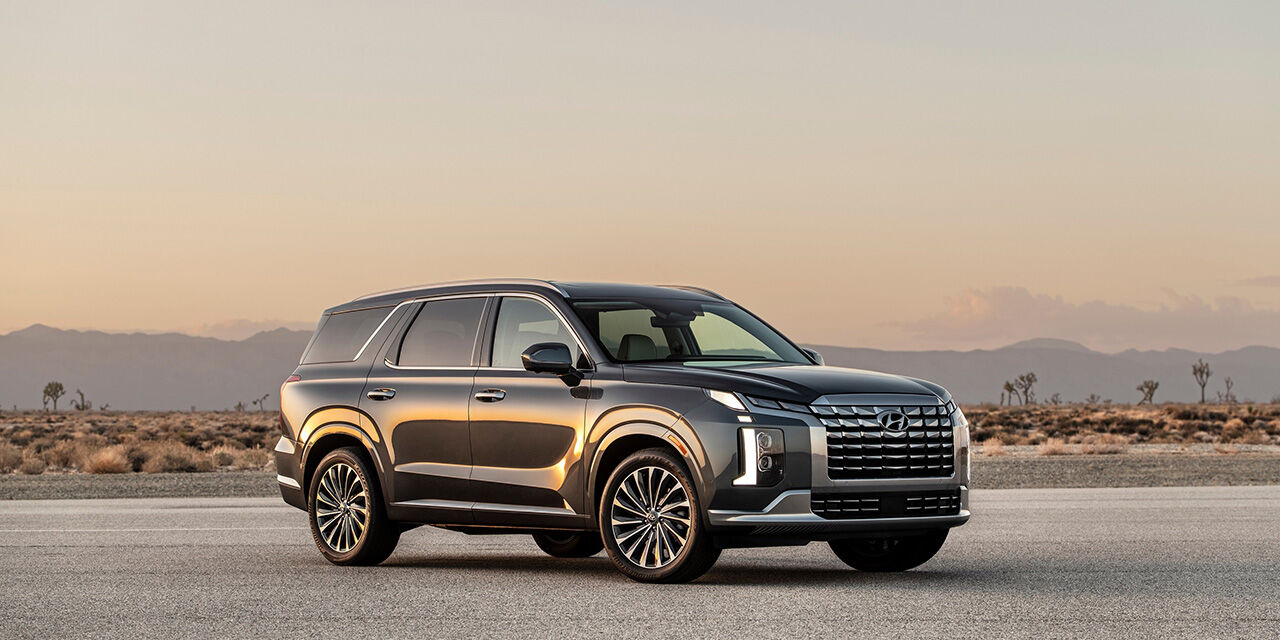
5. Hyundai Palisade
The Hyundai Palisade has been celebrated for its upscale interior and competitive pricing, but its third row, while usable, is not the best in the class for comfort. Though it seats two adults in the back, the legroom is somewhat tight, especially for taller passengers, who may find their knees pressed against the seatbacks in front.
Headroom is better than average for the segment, but the limited leg space makes the third row more suitable for children or shorter adults. The seats themselves are comfortable enough for shorter trips but lack the plush cushioning and adjustability found in some rivals.
Access to the Palisade’s third row is straightforward, with second-row seats that slide and fold easily to create a decent entryway. However, the step-in height is a bit high, which can make climbing in and out less convenient for some passengers.
The relatively narrow door openings in the rear further restrict movement and can make the third row feel more enclosed. This is a minor issue for occasional use, but can be a hassle for families who regularly carry six or seven passengers.
The third row in the Palisade offers few dedicated amenities. While it has cup holders and some storage, there are no separate climate controls for the back row, which can lead to uneven temperature distribution during extreme weather.
USB charging ports are limited and sometimes not within easy reach, which is a drawback on longer journeys where passengers want to keep devices powered. The materials in the third row are consistent with the rest of the cabin but don’t provide a noticeably plush experience.
Lastly, the ride quality and noise levels in the Palisade affect the third-row comfort. While the suspension generally smooths out bumps well, the rear of the vehicle can feel a bit firm when fully loaded, transmitting road imperfections to back passengers.
Noise insulation is good but not exceptional, meaning that wind and tire noise can occasionally intrude at highway speeds. Though the Palisade is a well-rounded SUV overall, those prioritizing superior third-row comfort might find better alternatives elsewhere.
Also Read: 5 Pickups With Largest Beds And 5 With Smallest Beds
Choosing the right SUV with a comfortable third row is more than just a box to check on a features list; it’s a decision that impacts daily life, travel experiences, and passenger satisfaction. The third row can transform an SUV from a simple family hauler into a true multi-passenger vehicle, accommodating larger groups and enhancing versatility.
However, this convenience only holds value if those seats deliver genuine comfort and usability. The vehicles we’ve highlighted demonstrate the broad spectrum of third-row experiences available today — from models that prioritize passenger well-being to those that treat the third row as a secondary afterthought.
SUVs like the Kia Telluride, Honda Pilot, Subaru Ascent, Toyota Highlander, and Ford Explorer exemplify how third-row comfort can be successfully integrated into modern SUVs. These models not only provide ample space for adults but also ensure ease of access, thoughtful amenities, and smooth ride quality.
Their designers have recognized that passengers in the back deserve as much attention as those in the front, integrating features such as rear climate controls, charging ports, and generous window space to create a welcoming environment. Such attention to detail results in a third-row experience that is both practical and enjoyable, fostering harmonious rides whether on daily commutes or long road trips.
Conversely, the SUVs we recommend skipping for third-row comfort — including the Chevrolet Traverse, Nissan Pathfinder, Jeep Grand Cherokee L, Volkswagen Atlas, and Hyundai Palisade — reveal how difficult it can be to balance design priorities. Despite their strengths in other areas like cargo capacity, off-road prowess, or pricing, these models fall short when it comes to making the back seats genuinely comfortable and accessible.
Limited legroom, awkward access, minimal amenities, and less refined ride quality all contribute to a diminished passenger experience in the third row. For families or groups who frequently use all seating positions, these deficiencies can translate into frustration and discomfort, making long trips particularly challenging.
Understanding these trade-offs is crucial for any buyer who values third-row comfort. It’s important to look beyond the headline features and test the vehicle under real-world conditions. Trying out the third row personally — checking legroom, headroom, seat cushioning, and ease of ingress and egress — can reveal what specs and brochures don’t fully communicate.
Similarly, paying attention to the presence (or absence) of amenities designed specifically for rear passengers can significantly affect daily usability. Noise levels and ride smoothness also deserve consideration, as they impact comfort just as much as physical space.
Ultimately, the best SUV for third-row comfort is one that aligns with your specific needs, whether that means prioritizing space for adults, ease of use, or passenger conveniences.
The market today offers more choices than ever, and the vehicles we’ve covered provide a solid foundation to start from. By focusing on models that genuinely value passenger comfort throughout the cabin, you can avoid common pitfalls and ensure that every journey is pleasant for everyone onboard.
In conclusion, third-row seating is no longer just a bonus feature but a critical element of an SUV’s appeal. As families grow and lifestyles demand more versatility, selecting an SUV with a truly comfortable third row will enhance your driving experience and passenger happiness.
Whether you gravitate toward the spacious luxury of the Kia Telluride or the tried-and-true reliability of the Honda Pilot, prioritizing third-row comfort is a smart move that pays off every time you hit the road.
Conversely, knowing which SUVs fall short in this regard can save you from unnecessary compromises and help you find a vehicle that works for your entire crew. In the evolving world of SUVs, a comfortable third row is not just desirable — it’s essential.

